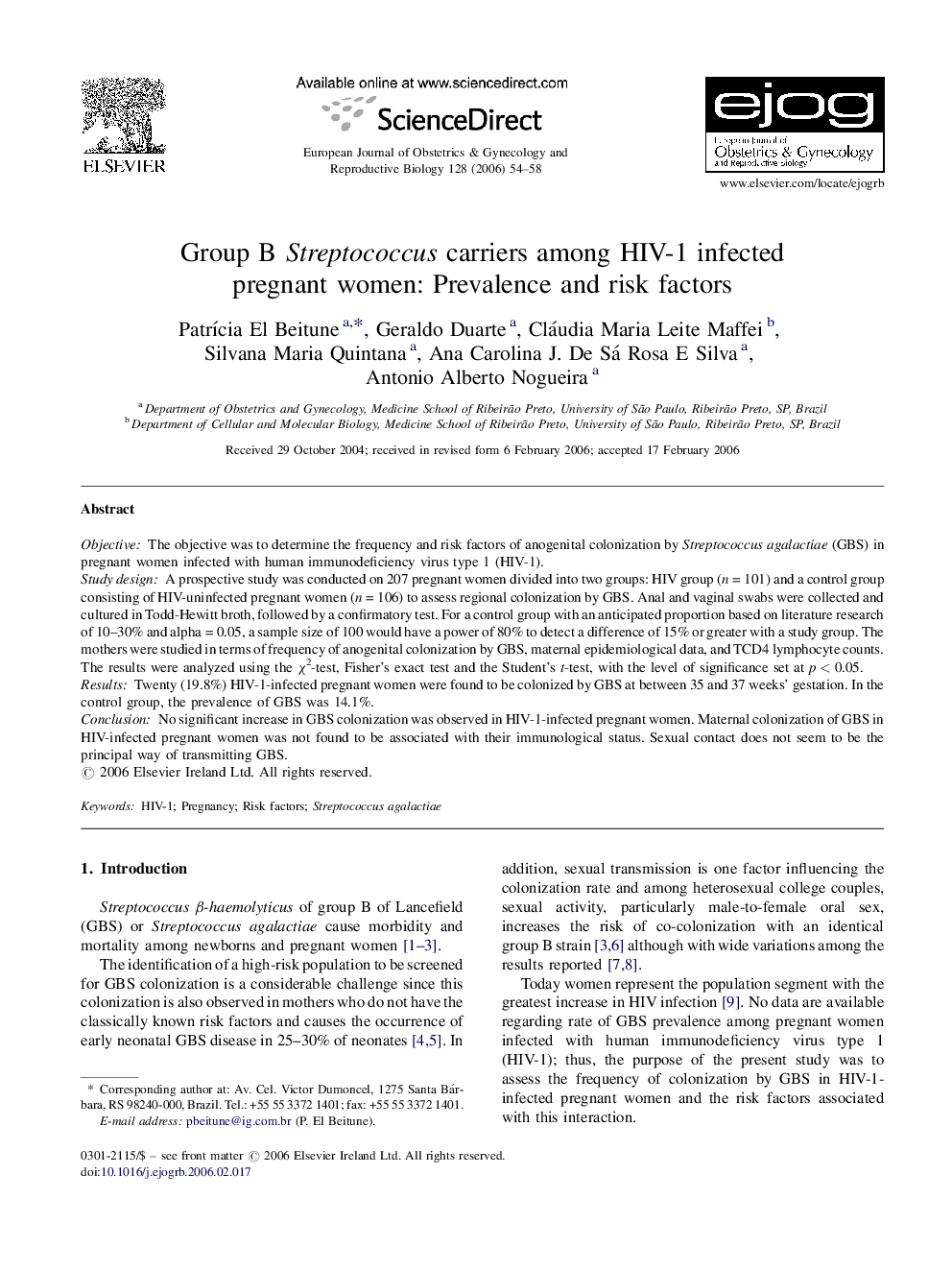| Article ID | Journal | Published Year | Pages | File Type |
|---|---|---|---|---|
| 3921711 | European Journal of Obstetrics & Gynecology and Reproductive Biology | 2006 | 5 Pages |
ObjectiveThe objective was to determine the frequency and risk factors of anogenital colonization by Streptococcus agalactiae (GBS) in pregnant women infected with human immunodeficiency virus type 1 (HIV-1).Study designA prospective study was conducted on 207 pregnant women divided into two groups: HIV group (n = 101) and a control group consisting of HIV-uninfected pregnant women (n = 106) to assess regional colonization by GBS. Anal and vaginal swabs were collected and cultured in Todd-Hewitt broth, followed by a confirmatory test. For a control group with an anticipated proportion based on literature research of 10–30% and alpha = 0.05, a sample size of 100 would have a power of 80% to detect a difference of 15% or greater with a study group. The mothers were studied in terms of frequency of anogenital colonization by GBS, maternal epidemiological data, and TCD4 lymphocyte counts. The results were analyzed using the χ2-test, Fisher's exact test and the Student's t-test, with the level of significance set at p < 0.05.ResultsTwenty (19.8%) HIV-1-infected pregnant women were found to be colonized by GBS at between 35 and 37 weeks’ gestation. In the control group, the prevalence of GBS was 14.1%.ConclusionNo significant increase in GBS colonization was observed in HIV-1-infected pregnant women. Maternal colonization of GBS in HIV-infected pregnant women was not found to be associated with their immunological status. Sexual contact does not seem to be the principal way of transmitting GBS.
